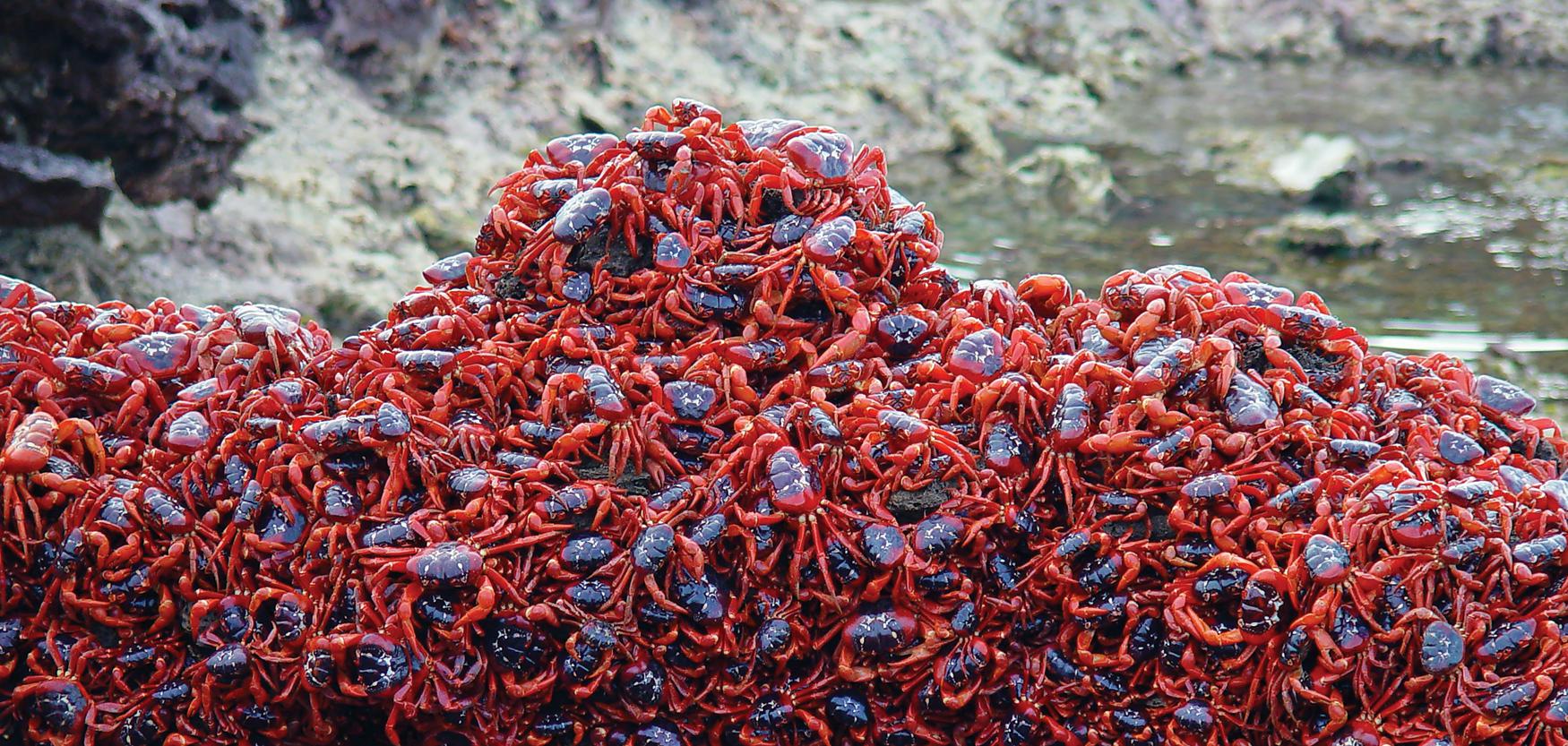Atlas Obscura on Slate is a blog about the world’s hidden wonders. Like us on Facebook and Tumblr, or follow us on Twitter.
Australia is renowned for being being filled with dangerous animals that can’t wait to kill you. Snakes, spiders, sharks, box jellyfish, and blue-ringed octopuses are but a few of the fauna that have the power to end you. But the country is also home to a menagerie of vibrant and fascinating creatures that are much more benign—at least to humans. Here are five of them.
The Giant Pink Slugs of Mount Kaputar
Mount Kaputar, an alpine peak in the southeastern state of New South Wales, is home to a plucky band of neon-pink slugs. Resembling glistening strips of raw tuna, these slugs can grow to over 7 inches long. They usually hide out under the leaves whose mold they feed upon, but at night they emerge by the hundreds, slithering around in search of tasty moss.
The slugs are the most striking residents of Mount Kaputar, but by no means the only unusual animal. Three species of cannibalistic snails live on the mountain, always chasing after one another’s slime trails.
The Drunk Parrots of the Northern Territory
Australia’s binge-drinking culture is not confined to its human inhabitants. Every October, when the wet season arrives in Australia’s north, drunk parrots begin falling from the trees. The birds are red-collared lorikeets who feed on fermented fruit and get, in the words of Australian Geographic, “completely sloshed, and sometimes for days at a time.”

Rotten fruit may not the sole reason the parrots get blotto. The lethargy and loss of coordination could also be symptoms of a virus that vets have not yet been able to identify. Whatever the cause, the effects are serious: The birds can die if left untreated. (As with human hangovers, treatment involves hydration, rest, and comfort food.)
The Giant Earthworms of Gippsland
The Gippsland earthworms are so big that when they were discovered in the 1870s they were initially mistaken for snakes. Inhabiting the blue-gray clay of Gippsland in the state of Victoria, the earthworms are an average of 1 inch wide and 3 feet long, but in rare, horrifying instances, can exceed 9 feet.
The worms spend most of their lives buried deep in their burrows, where they squelch around in the wet earth making impressive gurgling sounds. This clip from David Attenborough’s BBC series Life in the Undergrowth provides an intimate portrait of the earthworms.
The Lobsterlike Stick Insects of Ball’s Pyramid
Ball’s Pyramid, an 1,844-foot sea spire 12 miles off the east coast of Australia, is hardly lush with vegetation—it is almost entirely rock, its near-vertical cliff faces inhospitable to fauna and off-limits to mountain climbers without government permission. But in 2001, scientists scaling the rock found something wonderful: a nest of 24 Lord Howe stick insects, a lobster-esque species long thought to be extinct.

In 2003 a team from the National Parks and Wildlife Service scaled the pyramid and collected two pairs of stick insects for breeding in captivity. One pair died shortly after, but the pair dispatched to Melbourne Zoo—“Adam and Eve”—met with success, producing eggs that became the foundation of the zoo’s now thousands-strong tree lobster population.
The Seething Crab Hordes of Christmas Island
For most of the year, the red crabs of Christmas Island, an Australian territory located to the country’s northwest, wander the forests unobtrusively. But when the wet season arrives in October, the crabs stream toward the ocean to breed and lay eggs, turning the ground, grass, and roads into a crawling red carpet.

The crabs have a tiny but lethal enemy: yellow crazy ants, which were introduced to the island in the 1920s and have since wreaked havoc on its ecosystem. The ants shoot jets of formic acid into the crabs’ eyes, causing harm or even death. Yellow crazy ants have been such a menace to Christmas Island’s ecology that the Australian government established a seven-member Crazy Ant Scientific Advisory Panel in order to come up with harm-reduction strategies. Ant super-colonies were blasted with insecticide in 2009, but the little blighters’ numbers are rising again.
Visit Atlas Obscura for more on the pink slugs, drunk parrots, giant earthworms, lobsterlike stick insects, and crab hordes of Australia.
